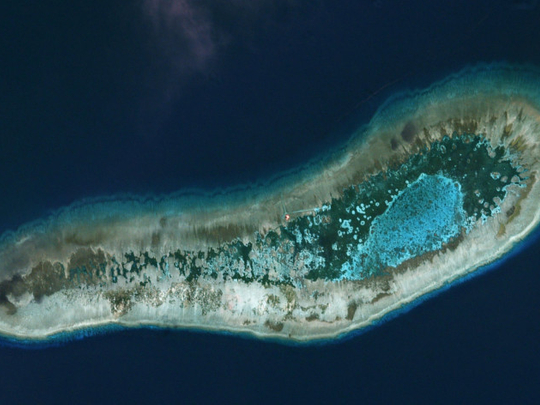
President-elect Donald Trump’s announcement that the United States will quit the Trans-Pacific Partnership (TPP) the day he enters office kills the stillborn deal. The 12-nation trade agreement negotiated during President Barak Obama’s term specifically excluded China. Without its anchor — the US, the TPP has lost its meaning, says Shinzo Abe, the Japanese Prime Minister.
When US Defence Secretary Ashton Carter visited India and the Philippines revealing new military agreements in April this year, it was evident that the US had decided to lean on military power to counter China’s growing presence in the south-east Asian region. Following The Hague ruling over the South China Sea (SCS) China appeared cornered; the US ratcheted up its rhetoric against China, which kept its cool.
Come December, south-east Asia appears to be a different world. China has attained significant success in building up diplomatic relationships with states that seemingly held anti-China positions over the South China Sea — with explicit US support.
America’s wish to make the Philippines the bulwark in its campaign to confront China and resist its claims over South China Sea has clearly misfired for now. More and more countries now realise that the world is not an American hemisphere where they are expected to kowtow to America’s diktats.
The new Philippines government under President Rodrigo Duterte is doing exactly opposite what the US expects and in showing an understanding of geopolitical realities, it has decided to peacefully resolve its disputes with China.
There is no danger of Chinese dominance over the Philippines, says Foreign Minister Perfecto Yasey Jr, adding that experience under the “white big brother” [the US] has produced a national resolve never to allow “any other nation to bully us.”
Badly in need of development funds, which the US cannot provide, Duterte stunned the world by announcing during his first overseas visit to China in October that it is “time to say good bye” to America. He halted joint military exercises and joint patrols with the US in the disputed South China Sea and asked American military advisors to withdraw from the troubled Mindanao region.
Duterte returned from China with $9 billion (Dh33 billion) in soft loans. The issue of sovereignty over Scarborough Shoal, the subject of initial rancour, was put on the back burner and Filipino fishermen have returned there to fish for their livelihood.
Malaysia’s embattled Prime Minister Najib Razak, stung by US accusations of money laundering from the state company 1MBD, followed Duterte to China within a fortnight and advised former colonial powers to stop lecturing younger states.
Malaysia and China announced during Razak’s visit that their navies would henceforth cooperate more in the South China Sea where both have competing claims. He agreed to buy naval vessels from China in a “landmark” defence deal.
Razak has reportedly agreed with the Chinese Prime Minister that settlement of the South China Sea issue should be reached through bilateral dialogue. He too returned home with Chinese investment commitments of $34 billion. China is also widely expected to win the high speed Kuala Lumpur-Singapore rail contract.
Thailand, also a treaty ally of the US which has seen relations with Washington suffer over the latter’s lecturing on human rights since the 2014 military takeover, announced plans to buy Chinese submarines and has already undertaken joint military exercises with the Chinese.
With the majority of Asean states opting for a dialogue with China over the South China Sea, America’s policy of China containment through regional states is unravelling.
Back home before Trump’s TPP announcement, the Obama administration, in the face of Congressional opposition, had abandoned attempts to seek its ratification from the outgoing Congress.
America’s abandonment of the TPP, billed as the anchor of its Asia-Pacific strategy, will dent American prestige and will erode the confidence of states which committed to their partnership with the US in the hopes to seeking a balance against China’s rise.
The financial muscle and a vision
China has the money, the reasons and a vision in the shape of the One Belt One Road (OBOR) through which China hopes to connect scores of countries in Asia, Europe and Africa in a shared economic relationship. The OBOR concept and its arteries such as the ‘Maritime Silk Road’ have caught the imagination of policymakers in the region.
Smaller states now realise that China provides money and economic engagement, which they need for uplifting their societies. The US tends to force a choice of “either you are with us or against us” on their interlocutors.
These smaller states welcome American know-how but do not want to be a proxy for the US in opposition to China.
The US needs to appreciate that the neighbouring regional states must accommodate a big neighbour’s (China) interests without which there cannot be regional peace. With a weakening US and ascending China next door, they are opting for mutually beneficial relations with China.
For the countries of south-east Asia who joined this US-led pact, it is a moment of reflection over their policy choices, making them seek accommodation with a more certain China rather than a wavering US.
Sajjad Ashraf is an adjunct professor at the Lee Kuan Yew School of Public Policy, National University of Singapore. He was a member of Pakistan Foreign Service from 1973–2008 and served and Pakistan’s Consul General in Dubai during mid ’90s.









